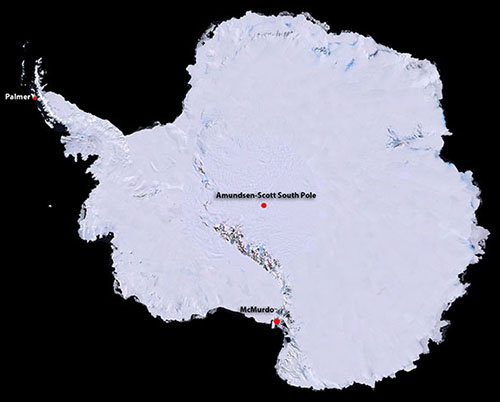United States Antarctic Program
Without interruption since 1956, Americans have been studying the Antarctic and its interactions with the rest of the planet. These investigators and supporting personnel make up the U.S. Antarctic Program, which carries forward the Nation's goals of supporting the Antarctic Treaty, fostering cooperative research with other nations, protecting the Antarctic environment, and developing measures to ensure only equitable and wise use of resources. The program comprises research by scientists selected from universities and other research institutions and operations and support by a contractor and other agencies of the U.S. Government. The National Science Foundation (the U.S. Government agency that promotes the progress of science) funds and manages the program. Approximately, 3,000 Americans are involved each year.
The research has three goals: to understand the region and its ecosystems; to understand its effects on (and responses to) global processes such as climate; and to use the region as a platform to study the upper atmosphere and space. Antarctica's remoteness and extreme climate make field science more expensive than in most places. Research is done in the Antarctic only when it cannot be performed at more convenient locations.
The program has three year-round research stations. In summer (the period of extensive sunlight and comparative warmth that lasts roughly October through February) additional camps are established for glaciologists, earth scientists, biologists, and others. Large, ski-equipped LC-130 airplanes, which only the United States has, provide air logistics. Air National Guard crews operate these planes. Helicopters, flown by a contractor, provide close support for many research teams. Tracked or wheeled vehicles provide transport over land and snow; small boats are used in coastal areas.
 |
The three U.S. year-round research stations are located on Ross Island (McMurdo Station), at the geographic South Pole (Amundsen-Scott South Pole Station), and on Anvers Island in the Antarctic Peninsula region (Palmer Station). |
